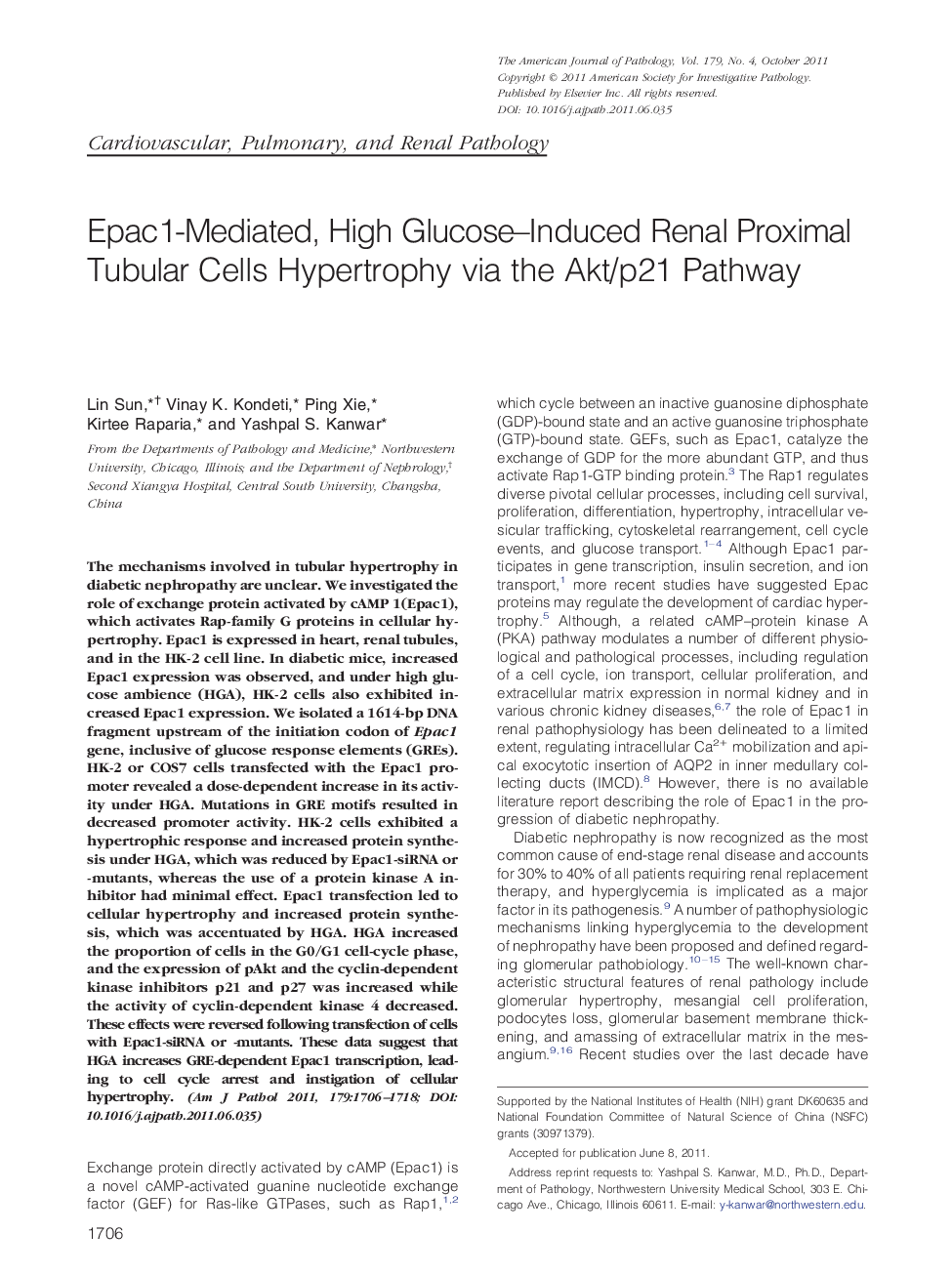| Article ID | Journal | Published Year | Pages | File Type |
|---|---|---|---|---|
| 5939233 | The American Journal of Pathology | 2011 | 13 Pages |
Abstract
The mechanisms involved in tubular hypertrophy in diabetic nephropathy are unclear. We investigated the role of exchange protein activated by cAMP 1(Epac1), which activates Rap-family G proteins in cellular hypertrophy. Epac1 is expressed in heart, renal tubules, and in the HK-2 cell line. In diabetic mice, increased Epac1 expression was observed, and under high glucose ambience (HGA), HK-2 cells also exhibited increased Epac1 expression. We isolated a 1614-bp DNA fragment upstream of the initiation codon of Epac1 gene, inclusive of glucose response elements (GREs). HK-2 or COS7 cells transfected with the Epac1 promoter revealed a dose-dependent increase in its activity under HGA. Mutations in GRE motifs resulted in decreased promoter activity. HK-2 cells exhibited a hypertrophic response and increased protein synthesis under HGA, which was reduced by Epac1-siRNA or -mutants, whereas the use of a protein kinase A inhibitor had minimal effect. Epac1 transfection led to cellular hypertrophy and increased protein synthesis, which was accentuated by HGA. HGA increased the proportion of cells in the G0/G1 cell-cycle phase, and the expression of pAkt and the cyclin-dependent kinase inhibitors p21 and p27 was increased while the activity of cyclin-dependent kinase 4 decreased. These effects were reversed following transfection of cells with Epac1-siRNA or -mutants. These data suggest that HGA increases GRE-dependent Epac1 transcription, leading to cell cycle arrest and instigation of cellular hypertrophy.
Related Topics
Health Sciences
Medicine and Dentistry
Cardiology and Cardiovascular Medicine
Authors
Lin Sun, Vinay K. Kondeti, Ping Xie, Kirtee Raparia, Yashpal S. Kanwar,
